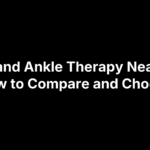Wondering when to replace running shoes? In simple terms, it’s the point when your shoes no longer cushion and support your stride the way they should—often before they look “worn out.” Midsoles pack down, outsoles flatten, and uppers stretch over time, changing how your foot lands and loads. That can turn familiar routes into achy runs and quietly raise your risk of overuse injuries. The right replacement window isn’t just about age; it depends on how far and where you run, your body mechanics, and the early signals your shoes (and your body) send: fading bounce, new hot spots, or uneven wear.
This guide explains the practical, evidence‑based way to time your swap. You’ll get the quick mileage answer most runners need, clear wear-and-tear signs, and the factors that shorten or extend a shoe’s lifespan. We’ll cover special cases like carbon “super shoes,” minimalist pairs, trail models, and walking use; offer a time-based plan if you don’t track miles; show simple ways to log wear; share tips to make shoes last; flag red‑alert symptoms; and outline when persistent pain means it’s not just the shoes. Let’s start with the short answer.
The short answer: how many miles most shoes last
Most runners should replace running shoes every 300–500 miles (about 480–800 km). That’s the range when midsoles typically lose bounce and support, even if the outsole still looks okay. Start checking closely around 300 miles; many daily trainers can stretch toward 500 if wear is even and your body feels good.
- Minimalist or featherweight/racing shoes: Plan on the lower end (around 300 miles); some plated “super shoes” keep comfort but lose peak performance sooner than daily trainers.
- Traditional/max-cushioned trainers: Often last closer to 500 miles.
- Higher body weight, heavy pronation, rough pavement/trails: Expect fewer miles.
- All wear counts: Miles from walking or casual use still age the shoe.
Clear signs it’s time to replace your shoes
You don’t have to see holes to know a pair is done. Most shoes “die” when the midsole stops absorbing shock and returning energy, often before the outsole looks bare. Do a quick audit—if several of these show up, it’s time to replace your running shoes.
- Flattened cushioning: Midsole feels hard or lifeless, with noticeably less bounce or support.
- Worn or uneven tread: Smooth patches, rubber worn thin, or one side more chewed up than the other.
- New aches or soreness: Fresh pain in feet, shins, knees, hips, or back after runs.
- Blisters or hot spots: Irritation in places you didn’t have issues before.
- Fraying inner heel or heel slip: Lining worn through or your heel no longer locks in.
- Upper breakdown: Tears, stretching, or a sloppy fit that lets your foot move around.
- Runs feel harder: Same routes suddenly feel harsher or more fatiguing without training changes.
- Long-in-use without mileage tracking: If you’ve run in them regularly for months, you may be past their prime.
What shortens or extends shoe lifespan
How long your pair lasts isn’t random—it’s a mix of where you run, how you move, and what the shoe is built to do. Those details determine when to replace running shoes inside that 300–500‑mile window and whether you can safely push toward the upper end.
- Your build: Heavier runners generally get fewer miles.
- Training load: Higher weekly mileage and back‑to‑back days compress foam faster; rotating pairs lets midsoles decompress.
- Surface: Rough pavement and rocky trails chew tread and exposed foam; match road shoes to roads and trail shoes to trails.
- Gait mechanics: More pronation = more uneven wear and earlier breakdown.
- Shoe type/materials: Minimalist and featherweight/race models trend shorter; traditional/max‑cushioned trainers often last longer.
- Casual use counts: Walking and errands add miles and age the shoe.
- Fit and lacing: Poor heel lock and yanking shoes off fray collars and stretch uppers.
- Care and storage: Keep shoes clean, dry, and out of heat; moisture and grime speed wear.
Special cases: race-day “super shoes,” minimalist, trail and walking
Not every shoe follows the same script. Race-day “super shoes” trade durability for speed, minimalist models have less foam to lose, trail shoes face harsher terrain, and “just walking in them” still burns through lifespan. Use the right tool for the job and plan your replacement window accordingly.
- Race-day “super shoes”: Expect the pop to fade sooner than daily trainers; many racers are optimized for roughly the first few hundred miles. Keep them for key workouts and races, then demote to training once the bounce drops.
- Minimalist/featherweight shoes: Less cushioning = shorter life. Plan around the lower end of the range (about 300 miles).
- Trail shoes: Similar mileage to road trainers, but terrain rules. Rocky, abrasive routes and exposed foam shred faster; using trail shoes on pavement (or road shoes on trails) accelerates wear.
- Walking/casual use: Those miles count. Wearing your running shoes for errands shortens their running lifespan—save an older pair for daily wear.
A time-based guide if you don’t track miles
If you don’t track miles, use months-in-use as a practical proxy. Base it on how often you run and how your body feels. Write the purchase date on the box or sockliner and set a reminder to check cushioning, fit, and tread—these windows reflect typical foam fatigue at common weekly volumes.
- Fewer than 10 miles/week: replace about every 8–12 months.
- 10–20 miles/week: replace about every 5–8 months.
- 20–40 miles/week (half‑marathon training): replace about every 4–6 months.
- 40+ miles/week (marathon training): replace about every 2–3 months.
If aches or uneven wear show up sooner, replace earlier; rotating pairs can extend these timelines slightly.
Simple ways to track shoe mileage and wear
You don’t need fancy tools to know when to replace running shoes. A simple, consistent system that logs miles and flags wear patterns will keep you ahead of aches and guesswork. Pick one method and stick with it across every pair, tied to habits you already have—post‑run notes, photos, or calendar reminders.
- Use your run app’s gear feature: Assign each run to the shoe and name it with the purchase date; set alerts at around 300 and 500 miles.
- Low‑tech log: Write the start date inside the shoe and tally miles in a phone note or basic spreadsheet.
- Photo check‑ins: Shoot the outsole and sidewalls on day one, about 150 miles, and about 300 miles to compare tread wear and midsole creasing.
Tips to make your running shoes last longer
Small habits can add months to a shoe’s life by slowing midsole compression, reducing abrasion, and preventing moisture damage. Focus on how you rotate, use, clean, and store your shoes—and you’ll push toward the higher end of the typical 300–500‑mile window without sacrificing comfort or safety.
- Rotate two pairs: Alternate between shoes so midsoles can decompress and dry; mixing models can also reduce repetitive stress.
- Wear them only for running: Errand and gym miles count toward lifespan—keep an older pair for casual use.
- Match shoe to surface: Keep road shoes on roads and trail shoes on trails to limit premature outsole and foam wear.
- Let them dry fully: Store in a cool, dry place between runs; avoid damp garages and direct heat.
- Keep them clean: Knock off dirt and rinse grime to protect uppers, foam, and traction.
- Unlace every time: Don’t pry shoes off with your other foot—protects heel counters and uppers.
- Check fit and lacing: A locked‑in heel and even lacing reduce rubbing and uneven wear.
Replace sooner if you notice these red flags
Mileage rules assume steady wear. If your shoes show certain red flags, replace sooner—even if you haven’t hit 300 miles or your usual time window. These signs point to lost cushioning or unstable geometry that can nudge you toward overuse injuries. Trust your body and what you see underfoot; a quick post‑run inspection can save weeks of aches.
- New joint pain or soreness: ankles, knees, hips, or back after runs.
- Blisters or hot spots: in places you never had before.
- Smooth or uneven tread: reduced grip, especially on wet pavement.
- Cushioning feels flat or hard: bounce and shock absorption are gone.
- Fraying inner heel or heel slip: collar/lining breakdown changes fit.
- Upper tears or stretching: sloppy fit lets the foot move around.
- Worn soles or heel damage: wear pattern starts altering your stride.
- Runs feel harder: same routes suddenly feel harsher without training changes.
If pain persists, shoes may not be the only problem
If aches continue after you replace or rotate shoes, the issue may be training or biomechanics. Footwear alone isn’t usually the primary cause of running injuries; it can be a factor alongside how much you run, your running surface, and your pronation. Persistent pain warrants a broader look at your routine and mechanics.
- Check recent changes: Sudden jumps in volume or switching surfaces can trigger pain.
- Assess mechanics: Overpronation and asymmetries drive uneven wear and stress.
- Get evaluated: A podiatrist or sports PT can perform gait analysis and advise on strength, form, or orthotics.
- Match shoe to need: Ensure fit, category (stability vs neutral), and surface all align with your runs.
Sustainable ways to retire old shoes
Once you’ve decided when to replace running shoes, keep them out of the trash. Most pairs still have value—either for lower‑impact use, donation, or recycling—if they’re clean and structurally intact. A quick wash and an honest condition check go a long way.
- Donate gently used pairs: Local charities, community drives, and nonprofits often accept clean, wearable shoes.
- Use take‑back programs: Some brands and running stores collect worn shoes for recycling into new products.
- Repurpose for low‑impact wear: Demote to walking, yardwork, travel, or gym strength days—not for runs.
- Prep before drop‑off: Remove personal insoles/orthotics, clean and dry, tie shoes together, and note the size.
- Reuse accessories: Keep laces as spares and repurpose the box for storage or shipping.
Bottom line
Most runners get the best results replacing shoes around 300–500 miles, checking more closely from 300 miles on. Listen to your body: flat cushioning, new aches, or slick/uneven tread mean it’s time—regardless of mileage. Terrain, gait, body weight, and shoe type push you toward the low or high end; rotating pairs and basic care stretch lifespan safely.
Not sure whether it’s the shoe or something more? A brief evaluation can save weeks of guesswork. If pain lingers or you’d like a gait check, our specialists are here to help. Book a foot and ankle assessment with the team at Achilles Foot and Ankle Center.






